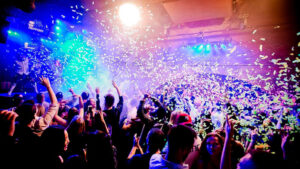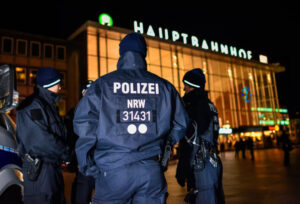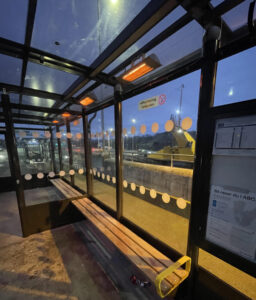Nightlife Backstage

Germany is known for having one of the best nightlife scenes in the entire European Union. From the extravagant clubs in Berlin to the more relaxed bars in Bonn, the country’s nightlife brings in millions of people from around the world each year.
However, despite a combined revenue of roughly €5.4 billion ($5.86 billion) annually, these nightlife establishments only contribute about 0.13% to Germany’s total annual revenue. The real contribution that the nightlife industry makes lies in its ability to influence tourism, culture, and urban development.
Economic Impact
Berlin, which is often considered to be the club capital of the world, has been attracting international visitors to its venues since the 1920’s. The city is a perfect example of the influence that an after-dark culture can have. In 2018 alone, Berlin’s club scene drew around three million tourists, which generated roughly €1.5 billion in revenue for the city’s economy.
These visitors don’t just spend money at clubs and bars, they also stay at hotels, eat at local restaurants, and use every method of public transportation. This creates a ripple effect that benefits the entire city. Similarly, while Bonn’s nightlife is on a much smaller scale, it still plays an important role in attracting students, locals and travelers.
Planning
With all of these people being out late at night, and often being unfamiliar with their surroundings, cities have to adapt their infrastructure to accommodate and protect them. Public transportation, lighting, safety measures, and urban design are all important aspects of making nightlife both enjoyable and sustainable.
Transportation
A key factor in a city’s successful nightlife economy is to ensure that people can move around efficiently and safely. Berlin has a renowned public transit system, with trains that run 24 hours on weekends and an extensive network of nighttime buses.
Accessible public transportation helps to reduce the risk of drunk driving and allows travelers to reach any part of the city. Likewise, Bonn has late-night tram and bus services that can efficiently transport people back to their homes at any time of the night.
Lighting and Security
With bars and clubs being open long after midnight, it is crucial for cities to implement proper outdoor lighting to ensure safety. Well-lit streets help pedestrians to navigate and also deter crime. Many nightlife districts in Berlin and Bonn have invested heavily in improved lighting for frequently traveled and crowded areas to make them safer for everyone.

Additionally, police and private security are an essential part of nightlife safety. Cities often implement extra police patrols around the more frequented nightlife locations to prevent crime and quickly respond to emergencies.
Weather Considerations

I know firsthand how brutal Germany’s winters can be, but I have also noticed that it doesn’t stop people from enjoying a night out. Luckily, cities provide infrastructure elements like heated bus stops, enclosed waiting areas, and well-maintained sidewalks to contribute to overall safety. In Berlin, some clubs implement heated, covered outdoor spaces just to accommodate their large crowds.
Infrastructure
Although nightlife is usually considered to be a topic related to entertainment, it intersects with civil engineering in multiple ways. Urban planners have to thoughtfully consider road design, traffic flow, pedestrian routes, and especially noise pollution management.
Interestingly, Berlin has even introduced grants for soundproofing clubs, in hopes of reducing complaints from residential areas while still allowing nightlife to thrive.
Bonn, on the other hand, benefits from its more compact layout, where nightlife areas are within walking distance of transport hubs. This helps to reduce pedestrian and vehicle congestion as well as the need for road modifications.
In both cases, the nightlife is an important part of each city that requires thoughtful planning and elaborate infrastructure.
Written by Brendan G
References:
Statista. (n.d.). Leading pubs, bars, and nightclubs in the European Union by country. Statista. Retrieved from https://www.statista.com/statistics/1136632/leading-pubs-bars-nightclubs-countries-european-union/
Pires, J. (2019, February 14). Throbbing clubs pump 1.5 billion euros into Berlin’s economy. RFI. Retrieved from https://www.rfi.fr/en/contenu/20190214-throbbing-clubs-pump-15-billion-euros-berlin?utm_source=chatgpt.com
Berlin Clubcommission. (2018). Economic impact of Berlin’s club tourism. Retrieved from https://www.6amgroup.com/berlin-nightlife-clubbing-tourism-1-58-billion-dollars
DEHOGA. (2024). Revenue in the hospitality industry in Germany from 2013 to 2022 (in billion euros). Statista. Retrieved from https://www.statista.com/statistics/563490/hotel-and-restaurant-industry-revenues-germany/
IBISWorld. (2024). Revenue of the pubs, bars, and nightclubs industry in the European Union in 2024, by country (in billion euros). Statista. Retrieved from https://www.statista.com/statistics/1136632/leading-pubs-bars-nightclubs-countries-european-union/

I’ve heard Germany has a vibrant and diverse nightlife scene, with each city offering something unique. Is it true Germany’s nightlife is all about the party lasting until the early hours? The drinking age is 16 for beer and wine (18 for spirits)?